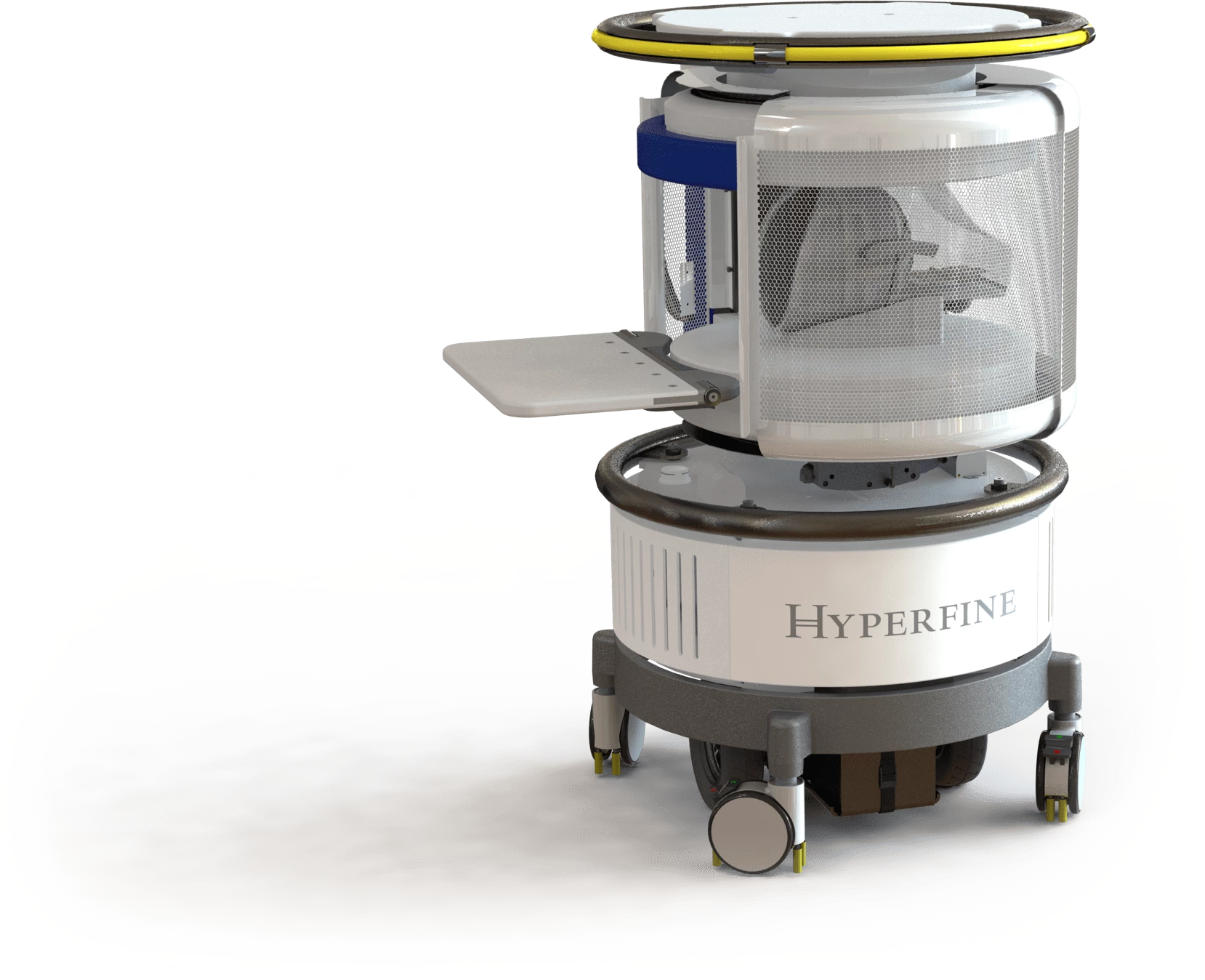Last year we learned of an interesting medical device that could play a significant role in expanding access to MRI imaging, by literally placing the technology on wheels. This world-first portable MRI machine proved its potential in early trials, and a new Yale-led study has built on this success by using it to detect cases of stroke in need of surgical intervention, with a high degree of accuracy.
Dubbed the Portable Point-of-Care MRI system, the machine is the handiwork of healthcare technology company Hyperfine, and was developed as a mobile alternative to large and expensive MRI machines that require custom-built rooms for their powerful magnetic fields. In essence, Hyperfine's MRI solution harnesses advances in computing power to dial down the size of magnets required, packing them into a machine that is 10 times lighter, 20 times less costly and uses 35 times less power than current MRI machines.
The machine can be rolled up to a patient's bedside, plugged into a standard power outlet and perform MRIs without the need for additional protective equipment. It was put to work in a study last year involving 30 patients hospitalized with brain abnormalities such as tumors and strokes, with the system accurately detecting those abnormalities in 29 of those subjects.

The same researchers have since conducted another study that explores the potential of the portable MRI machine specifically in diagnosing stroke. Time is of the essence for doctors treating patients presenting with signs of stroke, with some caused by clots that can be cleared with blood thinning medication and others caused by internal brain bleeding, which require surgical intervention.
The study involved 144 patients, with the scientists drawing on both traditional neuroimaging scans and MRIs performed by the portable machine. Trained experts then used the images to distinguish victims of intracranial hemorrhages (internal bleeding) from acute ischemic stokes (blood clots), along with healthy controls, with those relying on the portable MRI images doing so with 80 percent accuracy.
“There is no question this device can help save lives in resource-limited settings, such as rural hospitals or developing countries,” says Kevin Sheth, co-corresponding author of the research. “There is also now a path to see how it can help in modern settings. It is of critical importance to continue to collect more data across a range of stroke characteristics so that we can maximize the potential benefit of this approach.”
According to the researchers, this study is the first to use a portable MRI device to validate the appearance and clinical implications of a brain hemorrhage, though there is still more boxes to be ticked before Hyperfine's machine enters clinical use. If and when it does, however, it could play a pivotal role in improving health care in regions with no access to sophisticated brain imaging technology. As part of their next steps, the researchers plan to further explore its potential in diagnosing head trauma, brain tumors and at-risk patients with high-blood pressure.
The research was published in the journal Nature Communications.
Source: Yale University





